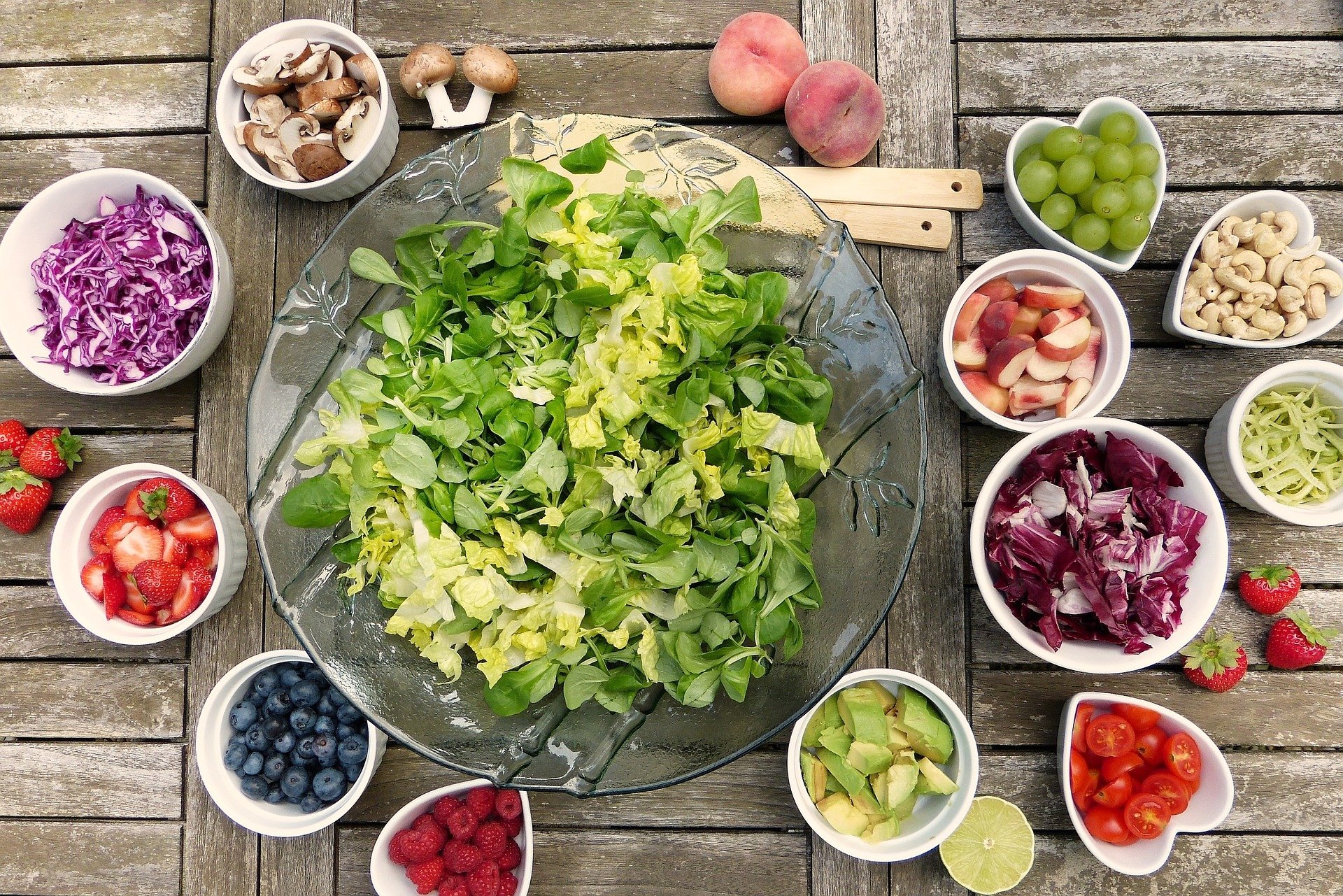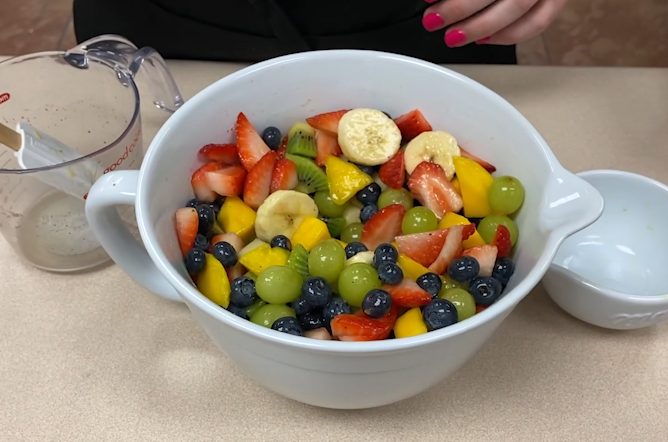Turn Over a New Leaf for Salad Month
go.ncsu.edu/readext?799597
en Español / em Português
El inglés es el idioma de control de esta página. En la medida en que haya algún conflicto entre la traducción al inglés y la traducción, el inglés prevalece.
Al hacer clic en el enlace de traducción se activa un servicio de traducción gratuito para convertir la página al español. Al igual que con cualquier traducción por Internet, la conversión no es sensible al contexto y puede que no traduzca el texto en su significado original. NC State Extension no garantiza la exactitud del texto traducido. Por favor, tenga en cuenta que algunas aplicaciones y/o servicios pueden no funcionar como se espera cuando se traducen.
Português
Inglês é o idioma de controle desta página. Na medida que haja algum conflito entre o texto original em Inglês e a tradução, o Inglês prevalece.
Ao clicar no link de tradução, um serviço gratuito de tradução será ativado para converter a página para o Português. Como em qualquer tradução pela internet, a conversão não é sensivel ao contexto e pode não ocorrer a tradução para o significado orginal. O serviço de Extensão da Carolina do Norte (NC State Extension) não garante a exatidão do texto traduzido. Por favor, observe que algumas funções ou serviços podem não funcionar como esperado após a tradução.
English
English is the controlling language of this page. To the extent there is any conflict between the English text and the translation, English controls.
Clicking on the translation link activates a free translation service to convert the page to Spanish. As with any Internet translation, the conversion is not context-sensitive and may not translate the text to its original meaning. NC State Extension does not guarantee the accuracy of the translated text. Please note that some applications and/or services may not function as expected when translated.
Collapse ▲I just picked some fresh leaf lettuce in our community garden, just in time to celebrate National Salad Month. May’s a great month for this celebration because many fruits and vegetables that can be combined to make a perfect salad are in season locally. Salads can be built in so many ways you could eat a different salad every day of the month. Although lettuce is the common base, don’t forget pasta, fruit, whole grain, and potato salads.
I bet you never heard of National Salad Month before. It was started by The Association for Dressings and Sauces back in 1992. The idea is to encourage us to incorporate more salads into our daily food patterns.
 With the few days left in May, take some to get creative with salads. Eating salads, salad dressing, and raw vegetables is a great way to add some nutrition to your meals. The US Dietary Guidelines encourage us to eat a variety of fruits and vegetables, plenty of grains, lean proteins, and healthy oils. All of these can be found in salads.
With the few days left in May, take some to get creative with salads. Eating salads, salad dressing, and raw vegetables is a great way to add some nutrition to your meals. The US Dietary Guidelines encourage us to eat a variety of fruits and vegetables, plenty of grains, lean proteins, and healthy oils. All of these can be found in salads.
Some fun salad facts from the folks at the holiday National Today website:
- The first salad bar was started at a Chicago restaurant in 1939.
- The Caesar salad was first created by an Italian chef working in Tijuana in 1924. His version did not have anchovies and only permitted the use of Italian olive oil.
- American growers saw a 33% increase in spinach consumption after the cartoon Popeye was introduced in the 1930s.
- Lettuce is the second most popular fresh vegetable in the United States—right behind the potato.
- Back in ancient times, Egyptians viewed lettuce as an aphrodisiac, making it sacred to Mind, the God of Fertility. Leonardo da Vinci’s painting “Leda” depicted the goddess of fertility holding a bouquet of lettuce.
The May edition of The Brunswick Buzz is out and it features a fruit salad recipe with a dressing made from honey and juices just in time for National Salad Month. This newsletter is written by the Family and Consumer Science Team at our Extension Office here in Brunswick County. Each month the newsletter features nutrition and health information, as well as announcements of upcoming educational programs.
You can use this recipe as a starting point for making it your own. The combination of fruit is up to you. Use what you have on hand. Oranges, peaches, or nectarines would be great additions. Dress it up with chopped almonds or other nuts to add crunch and a little protein.
Honey Gingered Fruit Salad
Salad Ingredients
- 1 large mango, peeled and cubed
- 1 cup fresh blueberries
- 1 small banana, peeled and sliced
- 1 cup strawberries, sliced
- 1 cup seedless green grapes
- 1 cup kiwi fruit, peeled and sliced
Dressing Ingredients
- 1/3 cup 100% orange juice
- 2 Tablespoons lemon juice
- 1 Tablespoon honey
- 1/8 teaspoon ground nutmeg
- 1/8 teaspoon ground ginger
Directions
- In a large bowl, combine fruit.
- In a small bowl, mix juices, spices, and honey together until well blended.
- Pour honey-ginger dressing over fruit and toss together.
- Refrigerate for at least 20 minutes. Serve chilled. Refrigerate any leftovers and eat within 5 days. Make approximately six one-cup servings.
Caution: Don’t give honey to infants under one year old and be sure to cut the grapes in half to avoid a choking hazard with young children.
Recipe adapted from Soulful Recipes: Building Healthy Traditions, Network for a Healthy California, 2009. Recipe courtesy of BOND of Color.
To see the step-by-step instructions for this recipe visit our website or our YouTube channel.
Sources
Live Smart Ohio blog, Patrice Powers-Barker, Ohio State University Extension, and The Association for Dressings and Sauces
Cheryle Syracuse wrote this article and more similar ones for the Family and Consumer Sciences Column in the Brunswick Beacon. Syracuse is an FCS team member and can be reached at N.C. Cooperative Extension, Brunswick County Center, 910-253-2610.




